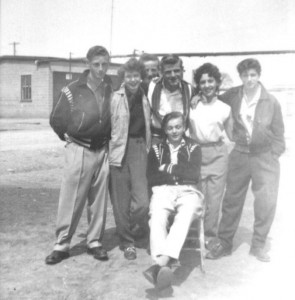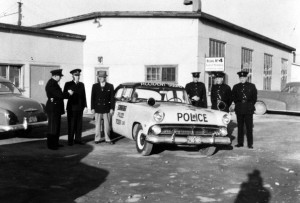GECO’s story didn’t end with Germany’s surrender. It didn’t end when the Hamilton Brothers locked the door for the last time and walked away. In fact, GECO was built so well, its buildings have survived their expected lifespan by over half a century.
Someone within the levels of the Canadian government decided not to raze GECO’s 172 buildings after the war, but, instead convert a small portion of buildings at the northern end, or “dirty side” of the property, into suitable post-war housing for needy families. The remaining buildings would be sold to local small businesses interested in pursuing peacetime work.
At the north end of the plant, bordering Eglinton and Warden Avenues, several buildings were taken by the City of Toronto, and were renovated into apartments to serve as emergency housing. The GECO housing community would serve its residents from 1946 to 1954. There are conflicting reports as to the number of residents housed within the compound, with numbers ranging from between 2,000 and 6,000 men, women, and children, or over 800 families.
Hundreds of families—including retired GECO workers and returning GIs—hoped the undulating countryside of Scarborough would be the perfect place to raise a family. For the most part, they were right. From wide open spaces to the gentle sway of wheat and corn in a slight wind, from the fragrance of rich earth to the soft moos of contented cows nearby – it was all good. The roads leading and leaving the housing complex were quiet – mostly farm vehicles making their sleepy way home, or going to market. A posted 30 Miles per Hour speed limit spoke to both the close proximity of children and to the area’s bucolic surroundings.
GECO residents fondly recall a unique time in their young lives where, due to humble economic circumstances caused by the fall-out of the World War, lived in rare conditions never to be repeated in their life-time, perhaps never again in Canada’s history. Memories of using communal wash rooms, noisy small apartments with “paper-thin” walls, the kind “blind man” who ran a small store, and the excitement of discovering the police cruiser of GECO’s police station (destined to become Scarborough’s 41 Division) riddled with bullet holes after the capture of the infamous Boyd Gang. There were sad stories too including the tragic death of eight-year old Kerry Taylor who fell to his death when he and his buddies tried to climb Scarborough’s new water tower at Civic Drive and Warden Avenue, and the equally tragic death of seven-year old Reginald “Butch” Halliday who was struck by a car when he tried to run across Eglinton Avenue.



48 comments for “GECO in a Time of Peace”